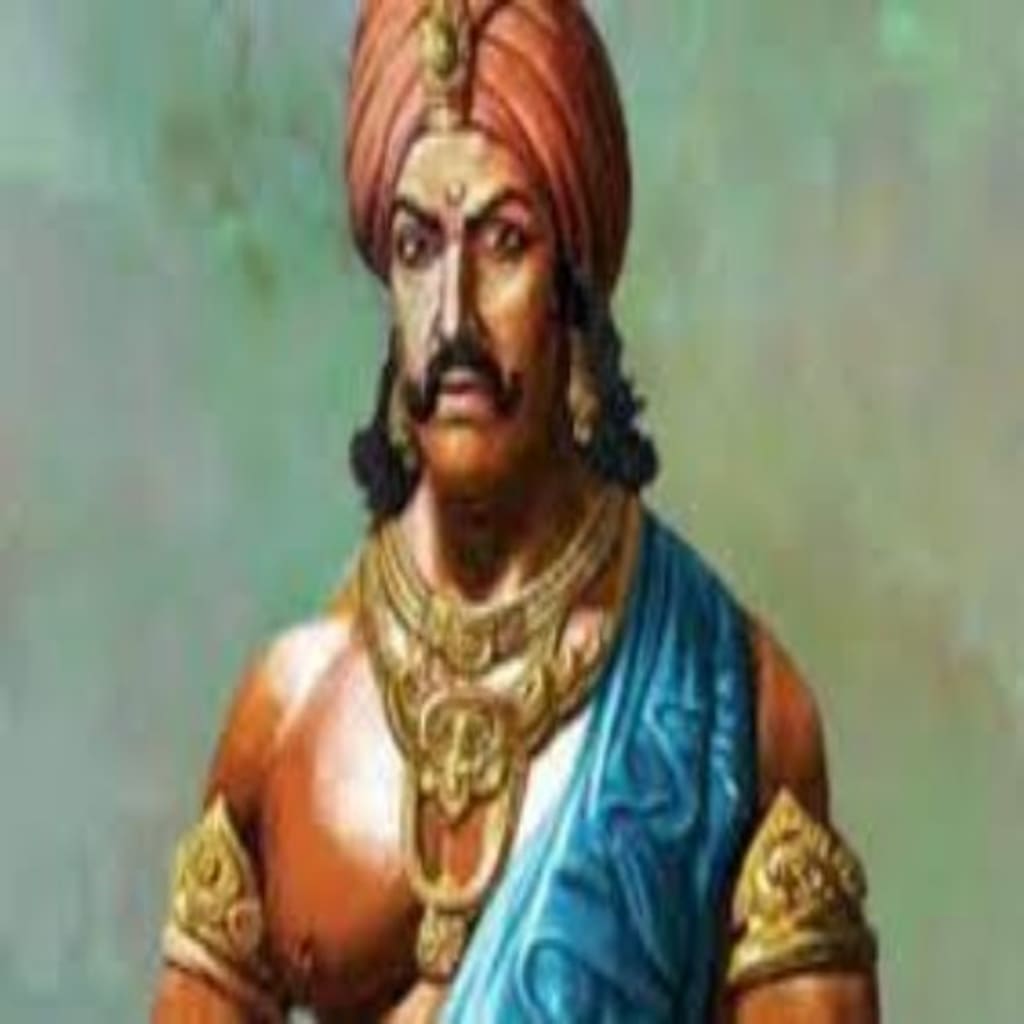The Great Indian Freedom Fighter: Veerapandiya Kattabomman
Veerapandiya Kattabomman
By Gopalakrishnan KPublished about a year ago • 3 min read
Like
Share

Introduction About Veerapandiya Kattabomman
- Veerapandiya Kattabomman was an 18th century Tamil Nadu chieftain who fought against the British East India Company. He was born into a family of the Maravar community in 1760, and became the chieftain of Panchalakurichi after the death of his father. Kattabomman was known for his bravery and military skills, and he was one of the first leaders to challenge British rule in India.
- During the late 18th century, the British East India Company was expanding its influence in India and had established control over many territories. Kattabomman saw the threat posed by the British and their exploitation of the local people, and he decided to resist their rule. He formed an alliance with other regional chieftains and raised an army to challenge the British.
- In 1797, Kattabomman led his army in a battle against the British at Kayathar. Despite being outnumbered, Kattabomman and his men fought bravely but were eventually defeated. Kattabomman was captured by the British and imprisoned in Kayathar. He was tried and sentenced to death, and was hanged in 1799.
- Kattabomman's resistance against British rule made him a symbol of bravery and patriotism in Tamil Nadu. His sacrifice inspired future generations to fight against British rule and helped lay the foundation for India's independence movement. Today, he is remembered as one of the first freedom fighters in India and a hero in Tamil Nadu.
- Kattabomman's memory has been kept alive through folklore, literature, and film, and his bravery is celebrated in songs, plays, and cultural events. The Fort where he was imprisoned, the Kattabomman Memorial Fort, is now a tourist attraction and a place of pilgrimage for those who admire his bravery and patriotism.
Kattabomman Fight Against British Government
- Veerapandiya Kattabomman fought against the British East India Company, which had established control over many territories in India during the late 18th century. Kattabomman saw the threat posed by the British and their exploitation of the local people, and he decided to resist their rule. He formed an alliance with other regional chieftains and raised an army to challenge the British.
- In 1797, Kattabomman led his army in a battle against the British at Kayathar. Despite being outnumbered, Kattabomman and his men fought bravely, but they were eventually defeated. Kattabomman was captured by the British and imprisoned in Kayathar. He was tried and sentenced to death, and was hanged in 1799.
- Kattabomman's resistance against British rule made him a symbol of bravery and patriotism in Tamil Nadu. His sacrifice inspired future generations to fight against British rule and helped lay the foundation for India's independence movement.
- Kattabomman's fight against the British was significant in that it was one of the first instances of resistance against British rule in India. It demonstrated that the local chieftains were not willing to accept British rule without a fight and inspired others to resist British domination. Kattabomman's bravery and patriotism continue to be celebrated in Tamil Nadu, and he is remembered as one of India's first freedom fighters.
- Veerapandiya Kattabomman's most significant battle was against the British East India Company in 1797 at Kayathar, a town in present-day Tamil Nadu, India. Kattabomman had formed an alliance with other regional chieftains and raised an army to challenge the British, who were expanding their control over many territories in India at the time.
- In the battle, Kattabomman and his men fought against the superior forces of the British East India Company. Despite being outnumbered, Kattabomman and his army put up a brave resistance. However, they were eventually defeated, and Kattabomman was captured by the British.
- Kattabomman's battle against the British was one of the first instances of resistance against British rule in India. It demonstrated the determination of the local chieftains to resist British domination, and inspired others to follow suit. Kattabomman's bravery and patriotism continue to be celebrated in Tamil Nadu, and he is remembered as one of India's first freedom fighters.
Conclusion
Veerapandiya Kattabomman was a chieftain from Tamil Nadu, India, who lived in the late 18th century. He is remembered for his resistance against the British East India Company and his bravery in the battle at Kayathar. Despite being outnumbered, Kattabomman and his army put up a valiant effort, and his resistance inspired future generations to fight against British rule and lay the foundation for India's independence movement. Kattabomman's legacy continues to be celebrated in Tamil Nadu, and he is remembered as one of India's first freedom fighters and a symbol of bravery and patriotism.
Like
Share





Comments
There are no comments for this story
Be the first to respond and start the conversation.